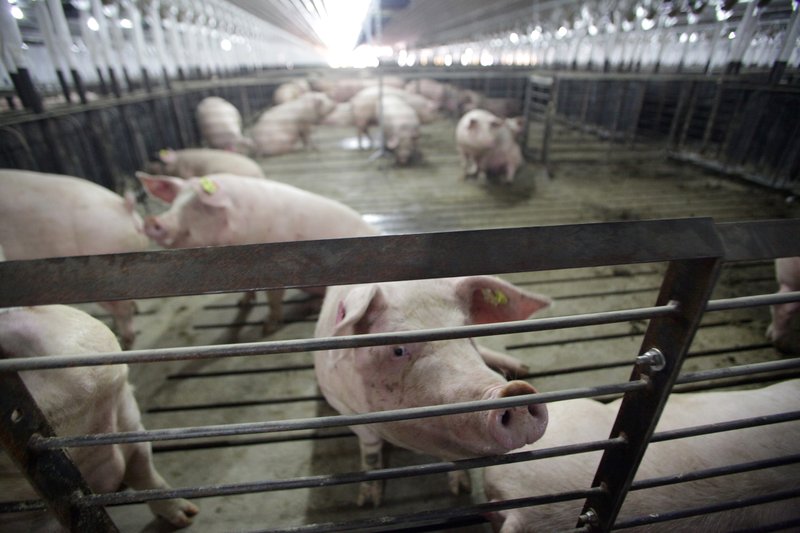Two federal agencies' "finding of no significant impact" report on the environment from C&H Hog Farms near the Buffalo River has been signed, effectively ending a lawsuit that sought to curtail the farm's operations in the area.
In a three-page statement signed Feb. 18 and posted online Wednesday, the U.S. Small Business Administration and the U.S. Department of Agriculture Farm Services Agency finalized the findings of an environmental assessment drafted in August and completed in December.
The 81-page report concluded that permanent damage to the environment is unlikely from C&H Hog Farms. The farm, permitted to have up to 2,503 sows and 4,000 piglets, is on Big Creek 6.8 miles from where the creek meets the Buffalo River.
"The construction and ongoing operation of the C&H Hog Farm did not and is not expected to result in any irreversible or irretrievable resource commitments," the report said.
A lawsuit filed in 2013 by the Buffalo River Watershed Alliance, the Arkansas Canoe Club, the National Parks Conservation Association and the Ozark Society said the federal agencies failed to adequately consider the hog farm's impact on the environment in their initial assessment. That led to a second assessment being ordered by a federal judge.
"Essentially they reached the same conclusion as the faulty environmental assessment," said Gordon Watkins, president of the Buffalo River Watershed Alliance. "We think they ignored sound science, and they cherry-picked data that suited preconceived notions of what their conclusions would be."
Watkins' group wanted the assessment to call for more research in the area, such as that being done by University of Arkansas at Fayetteville geosciences professor John Van Brahana. Brahana has said data collected over the past two years put the likelihood of swine waste from the hog farm reaching the Buffalo River at 95 percent.
The Buffalo River is the nation's first national river. More than 1.3 million people visited the river in 2014 and spent about $56.5 million at area businesses, according to National Park Service data.
Jason Henson, co-owner of C&H Hog Farms, didn't return a phone call Wednesday afternoon seeking comment.
Henson has previously said the federal agencies' August "finding of no significant impact" was good news for the next farmer who wants a loan or loan guarantees from either federal agency.
The four groups that filed the lawsuit and Earthjustice, a national nonprofit law group, could file a new complaint based on the finding of no significant impact, but Watkins said that seems unlikely at the moment.
"We just think at this point it's probably not a wise use of resources," Watkins said, of pursuing additional litigation.
Watkins said his group will now focus on complaints at the state level, such as two filed since September that accuse C&H Hog Farms of violating its permit.
The Small Business Administration and the USDA Farm Services Agency conducted their first study on the farm's environmental impact in 2012.
The Buffalo River Watershed Alliance, the Ozark Society, the Arkansas Canoe Club and the National Parks Conservation Association sued the federal agencies in 2013 after the agencies had agreed to back loans made to C&H that allowed the farm to open.
Because the farm didn't have sufficient collateral for its loan from Farm Credit Services of Western Arkansas, it had to get loan guarantees from the two federal agencies. The loan guarantees required the original environmental assessment.
A federal judge ruled in October 2014 that the initial study was faulty because it did not address the Endangered Species Act or the National Environmental Policy Act.
The finalized assessment studied surface water, groundwater and soils in the surrounding area, among other things. It determined that no action is needed in any of those areas to avert negative consequences on the environment.
Several passages in the assessment acknowledged that any heavy rain that produces 50-year or 100-year flood levels could lead to accidental discharges from farm waste lagoons that would have a "short-term" impact on nearby surface water.
The three-page summary of the final assessment was signed Feb. 18 by Farm Service Agency administrator Val Dolcini and John A. Miller, deputy associate administrator with the Small Business Administration office of capital access.
Metro on 02/25/2016
